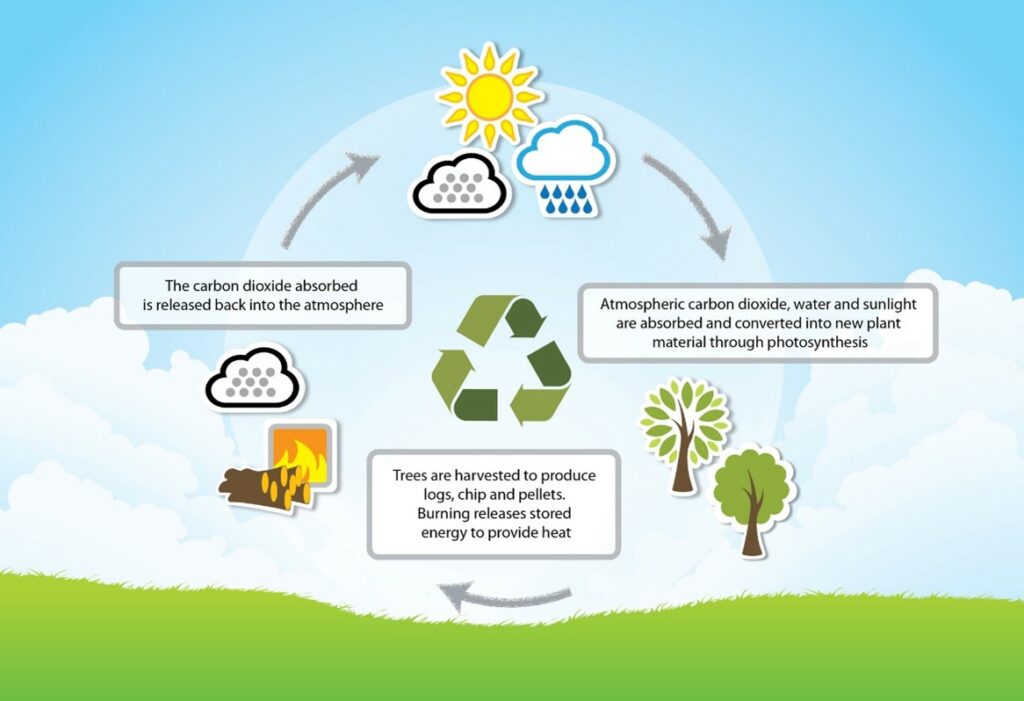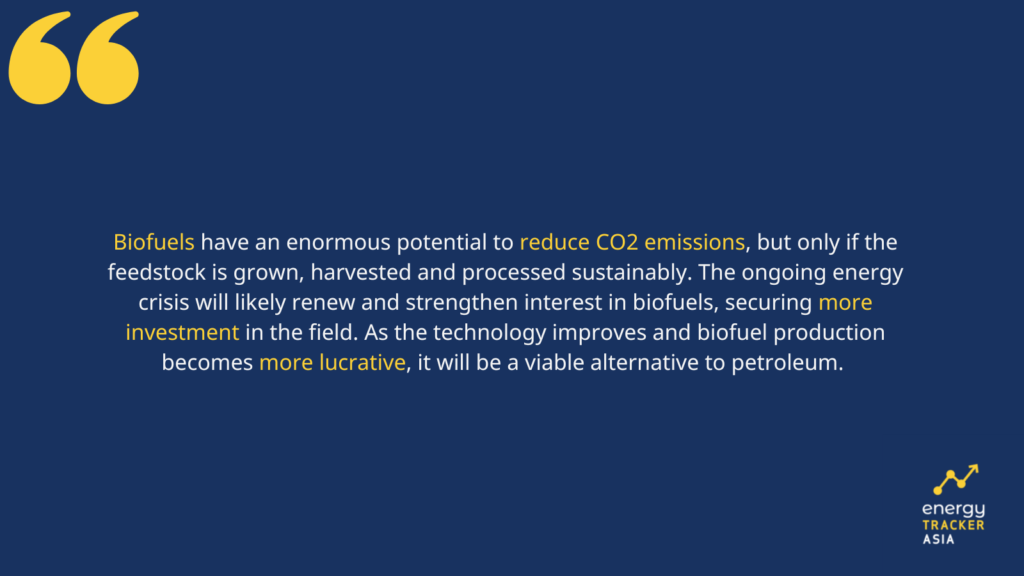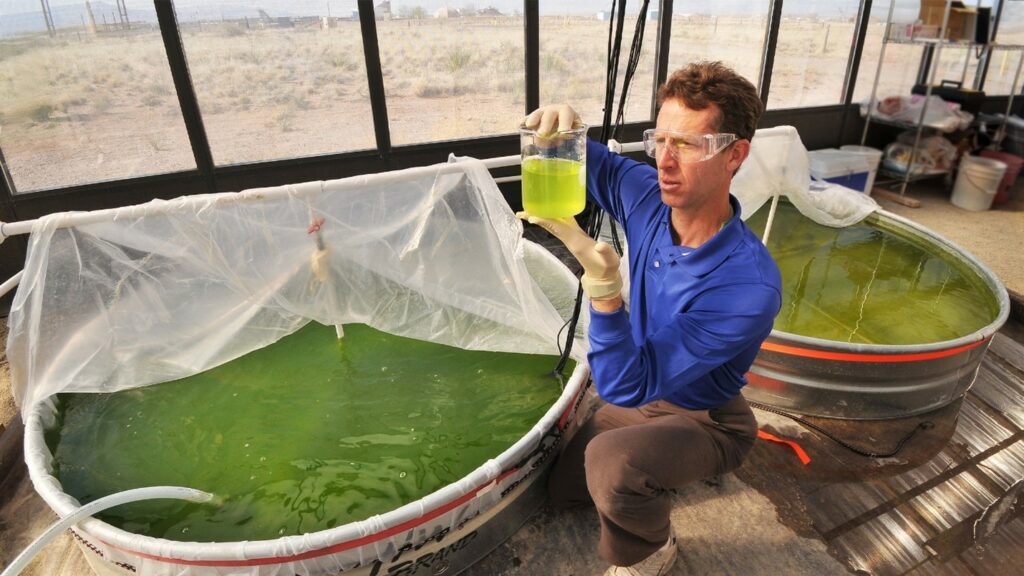Is Biofuel Renewable? The Ongoing Debate
Photo by Jim Parkin
15 December 2022 – by Eric Koons
Many people see biofuel as a potential pathway to decarbonise fossil fuel-reliant systems, yet there is still much debate on whether biofuel is renewable. Since the idea of biofuel as a possible disruptive technology first reached the public, people have questioned its status as a renewable energy source.
What is Biofuel?
Biofuels are fuels that come from biological matter (plants and animals). Compared to fossil fuels, which have a very slow production process, biofuels require a short timeframe.
What is Biofuel Made of | Biofuel Production
Biofuel is made of plants and animals. Even though biofuels come from natural, renewable feedstocks, they are not carbon neutral. Factors, such as competition with food for arable land, questionable deforestation practices and persistent fossil fuel use in feedstock production, are important considerations.
Advantages and Disadvantages of Biofuels
There are many pros and cons of biofuels. The nature of biofuels as a renewable resource is straightforward. Biofuels come from crops that grow quickly or biomass waste that would otherwise go into landfills. The feedstock is organic and is grown repeatedly to create new biofuel. This is one of the main advantages of biofuels.
Additionally, the actual life cycle of biomass is carbon neutral. Plants absorb carbon dioxide from the atmosphere while growing and then release the same amount when they undergo combustion for energy. Therefore, biofuel is a renewable fuel source.

However, when we consider the entire life cycle of biofuel production, other impactful factors exist beyond just its renewability.
Production of initial feedstock for biofuels requires large areas of farmland. This leads to increased deforestation and environmental degradation rates to create adequate arable land. As a result, natural biological systems break down, damaging natural carbon sinks and destroying animal habitats. This is one of the many disadvantages of biofuels.
In addition, many farmers have a higher financial incentive to produce biofuels on their land, effectively decreasing the amount of food they produce for human and animal consumption. Finally, industrialised agriculture, which creates a large portion of the world’s crops, is very carbon intensive and accounts for one-third of global carbon dioxide emissions.
As a result, biofuel production includes several sources of embodied carbon dioxide.

Is Biofuel Good for the Environment?
Estimating the exact emissions of converting land for biofuel feedstock production is challenging. Generally, it depends on several factors relating to the environment and production process.
Possible CO2 emitting practices in biofuel feedstock production and processing include:
- deforestation and subsequent CO2 release from the soil,
- tilling land, a carbon-intensive process causing land degradation and reducing the biomatter available in the soil,
- fertiliser production, which is fossil fuel-based and reduces naturally occurring soil nutrients,
- the use of agricultural machinery and petroleum fuel and
- feedstock processing, transportation and biofuel production, requiring input energy.
In most of these cases, we can use renewable energy as the power source to make these processes carbon neutral. However, ensuring that the energy is green can be difficult, especially in developing countries.
Meanwhile, biofuel production’s emissions of carbon dioxide and greenhouse gases over the full life cycle are typically much less than fossil fuels. For example, one gallon of biodiesel generates 74% less carbon dioxide emissions than the same quantity of petroleum based diesel fuel. This is a significant difference, but it doesn’t make it a carbon-free alternative.

Biofuels Examples
We categorise biofuels into three categories associated with the type of initial feedstock used in production. These categories are first, second and third-generation. First-generation biofuels use existing row crops (food crops), second-generation biofuels use cellulose from biomass (plants not used for food) and third-generation biofuels rely on algae. Each form of biofuel is renewable, regardless of its input feedstock.
Here is a breakdown of the three existing generations of biofuels:
| Biofuel Generation | Energy Source | Source Examples | Biofuel Obtained |
| first generation | sugar crops | sugar beet, sugarcane | ethanol, butanol, propanol |
| starch crops | sorghum, corn | ethanol, butanol, propanol | |
| oilseed crops | canola, soybean | biodiesel | |
| animal fats | animal fats | biodiesel | |
| second generation | cellulose from non-food crops and waste biomass | straw, corncobs, wood, wood waste and other biomass | cellulosic biofuels |
| third generation | algae feedstock | algae | ethanol, butanol etc. |
The two most common types of biofuels are ethanol and biodiesel.
Ethanol Biofuel – First-Generation Biofuels
Ethanol comes from various biomass sources, like corn or sugarcane. It is an alcohol, so it acts as a solvent and a blending agent. Mixed with non-renewable fuels, it increases their combustion efficiency and reduces overall emissions. As a result, 98% of gasoline in the US contains some percentage of ethanol.
Biodiesel – Second-Generation Biofuels
On the other hand, biodiesel has great potential to reduce the amount of municipal and commercial waste, including oils and fats. In biodiesel production, these fats and oils mix with alcohol. This mixture burns cleaner than conventional diesel and is often sold on the market as a 20-80% mixture of biodiesel and petroleum diesel.
Algae Biofuel – Third-Generation Biofuels
Algae biofuel uses algae as a source of oils. The oils are extracted using ultrasound, which breaks cell walls, making the oil accessible. The oils go through a refining process and are combined with methanol to produce the final biofuel product. Finally, the remaining biomass is put back into the system as a feedstock for next-generation algae.
Additionally, algae can be grown on a large scale where there is non-arable and less desirable land. While this is one of the newest and advanced biofuels, it is promising. For example, genetically modified algae and seaweed can significantly increase the production of oils.

Will Renewable Biofuels Be Important for Future Decarbonisation?
Biofuels have an enormous potential to reduce CO2 emissions, but only if the feedstock is grown, harvested and processed sustainably. However, the technology needs to be widely accepted or have the production scale to replace traditional fossil fuels.
However, the ongoing energy crisis will likely renew and strengthen interest in biofuels, securing more investment in the field. As the technology improves and biofuel production becomes more lucrative, it will be a viable alternative to petroleum. In summary, this is an opportunity to move away from the social, political and economic issues associated with fossil fuels.
by Eric Koons
Eric is a passionate environmental advocate that believes renewable energy is a key piece in meeting the world’s growing energy demands. He received an environmental science degree from the University of California and has worked to promote environmentally and socially sustainable practices since. Eric’s expertise extends across the environmental field, yet he maintains a strong focus on renewable energy. His work has been featured by leading environmental organizations, such as World Resources Institute and Hitachi ABB Power Grids.
Read more